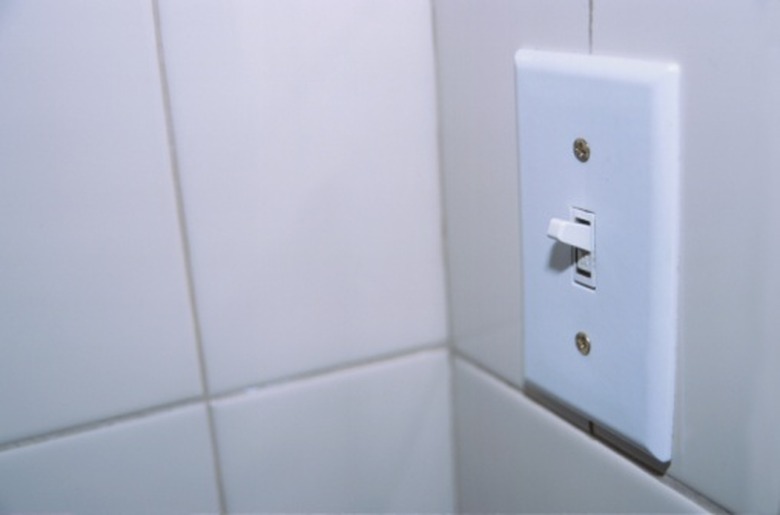How To Change Porcelain Tile Color
Things Needed
-
Power sander
-
Aluminum oxide sandpaper (medium abrasion)
-
Paintbrushes
-
Oil-based primer
-
Oil-based paint
-
Oil-based polyurethane
-
Extra-fine sandpaper
Porcelain tile, like ceramic tile, is colored in the manufacturing process, and can be changed to a different color with the proper preparation and materials. The challenge is getting the paint to stick, as porcelain tiles are usually glazed, and paint does not stick to that glaze. Dulling the glaze by sanding, following by priming, helps the paint stick, then it's all sealed in with polyurethane. Oil-based paints and polyurethane have long drying times, but are worth the wait for their better adhesive qualities.
Step 1
Sand the porcelain tile surface with a power sander and medium-abrasion aluminum oxide sandpaper. Run the sander slowly over the surface to dull the glaze the point that it looks flat instead of shiny. Sand only the tile surface, not the grout lines. Wipe up the dust.
Step 2
Brush oil-based primer onto the tiles, in a smooth, flat coat. Paint just the tiles, not the grout. Let it set for 24 hours.
Step 3
Paint the tiles as desired with oil-based paint. Use either solid colors or designs in a variety of colors. Don't paint the grout. Let the paint set for 24 hours.
Step 4
Add a second coat of paint in the same manner as the first. Let it set for 24 hours.
Step 5
Brush on oil-based polyurethane gloss, in a thin, even layer over the tiles (not the grout), making sure the brush strokes are all going in the same direction. Let it set for 24 hours.
Step 6
Buff the polyurethane by hand, with extra-fine sandpaper, to dull the shine so the next layer will adhere.
Step 7
Brush on a second polyurethane layer in the same manner as the first. Let it set, buff it and brush on a third layer. Let the third layer set for 24 hours.
